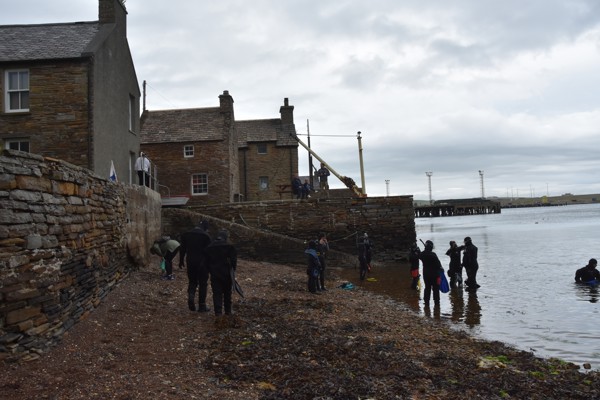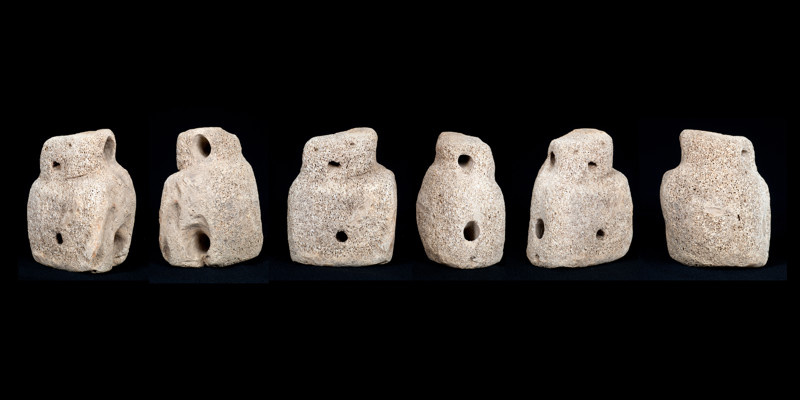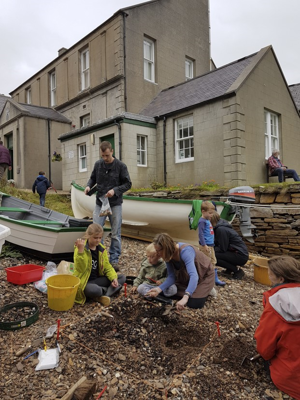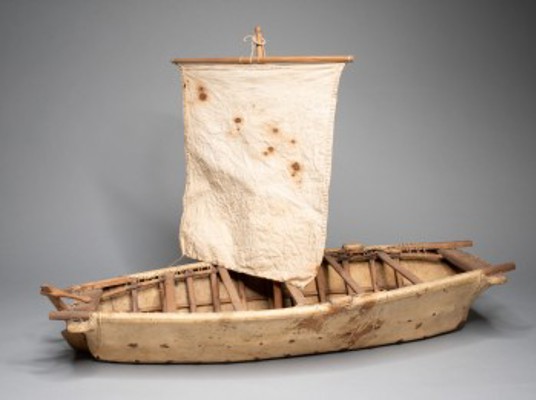
Stromness Museum
by Robin McKelvieIf you’ve never sailed into Stromness you really should. You are still reeling from taking in the Old Man of Hoy and the rugged coastline of the eponymous isle when you ease towards the western approaches of the epic expanse of Scapa Flow – one of the world’s great natural harbours. And there it is: Stromness, a monument in stone that ripples with life on the water’s edge. The town is as striking for me as the archipelago’s famous Neolithic sites, but with a very much still beating community heart.
My interest in Stromness began at university when I was introduced to the wondrous works of Orcadian bard George Mackay Brown. His majestic Greenvoe novel drew me in straight away into the fictional tight-knit community that mirrors the real life one. Then it was on to his remarkable poem Hamnavoe, the name for the old settlement that the Vikings once had here. In more recent years my imagination has been lost in the ethereal soundscapes of sometime Stromness resident Erland Cooper.
When I first arrived in Stromness I walked the stone streets, catching glimpses of water between the sturdy stone buildings, as gulls squawked overhead under big Orcadian skies. It looked exactly as I had hoped, but I wanted to know more; needed to know more. I found it at the Stromness Museum.
A Remarkable Museum

This remarkable museum is an independent charity run by Orkney Natural History Society, which was constituted in 1837. Let that sink in for a minute - it is basically at least a century older than any of Orkney’s current municipal museums. In fact it is one of the oldest Victorian Enlightenment natural history museums still in existence today. Anywhere.
The Stromness Museum is spectacularly housed within a B-listed Victorian building in the historic heart of the town. Janette Park is the museum’s curator. “You cannot separate the history of our museum from the story of Stromness, nor separate the history of Stromness from the story of our museum,” she smiles, understandably proud of her charge. “We hold the primary Natural History, Maritime and Ethnographic Collections on behalf of Orkney, but we are so much more than that to the local community and for the visitors who come here from all over the world looking for – and telling their own - stories.”

Park explains more of the museum’s role: “We care for the long term survival of the collections; we are gatekeepers for the information held in the collections. We also interpret and look at what the history and its stories tells us. And then look at how we can use that to connect with the people that come through our doors, wherever they are from.”
Memories Far Beyond its Walls
Their collection really is diverse and multi-faceted. It is a treasure trove that contains myriad artefacts that tie into community connections and shared memories that extend far beyond its walls. Increasingly visitors are coming to trace their ancestors, as many Orcadians emigrated to North America, Canada, Australia and New Zealand during the 18th and 19th centuries. The most intriguing links for me are those with the Hudson's Bay Company (HBC), which came here at the start of the 18th century. Park explains: “ At one point three quarters of their entire workforce hailed from Orkney. Many settled in Canada making new lives for themselves, marrying Cree women and raising families. The Arctic explorer, Dr John Rae worked for the HBC and is most famous for the discovery of the last link in the North West Passage and for the Discovery of the Fate of the Franklin Expedition. Canadian visitors with Orcadian surnames such as Flett and Corrigall visit and often tell us they immediately feel a connection with their Orcadian heritage.”

Impressively the Stromness Museum is open to the public seven days a week from April to October, then part-time or by appointment the rest of the year. I really like that in the quieter months they have free days that allow members of the community who might not feel able to visit at other times to enjoy the collections. They also hold public talks and events, both in the museum and in different venues in the town, such as the golf club and town hall, to allow wider public access and build bridges with the wider community.
Immersive Guided Tours
Not one to rest on their stone laurels, the team in summer 2022 dreamt up a programme of guided tours, tailored both for locals and visitors, aiming to help – in Park’s own words – “visitors feel like temporary locals”. Orkney gets a lot of repeat visitors – go and you will soon see why – so these tours are a great way to offer new, immersive experiences.
Park reveals the range of tours, a range that will be repeated this summer – “ We have Curator's Tours in the museum led by yours truly, Shoreline Rambles around our beach-front and even a Snorkel Safari. The latter tours were really popular with families, both locals and visitors. We also hold family workshops during the summer, with interactive activities which link to our summer exhibition. Last year children had the opportunity to find out how food was made in the Iron Age by churning cream to make butter and grinding grain with a quern to make flour.”

Helping the younger people of Stromness thrive and develop knowledge and skills is another central aim of the Stromness Museum. “We host school visits and work with the teachers to develop activities and resources such as equipment for Shoreline surveys and Geology Backpacks to lend out to schools. We attend the School fayre and offer free activities, which is appreciated as the purpose of the fayre is to make money for the school. Some local secondary school children doing their Saltire Awards have benefited from work experience here, which has helped improve their skills and confidence.” The museum also has links with Robert Gordon University and Heriot-Watt University’s Orkney Campus – the International Centre for Island Technology, where students come to do an MSc in Renewable Energy Development.”

Natural History
This focus on green energy and sustainability is developed at the museum too. Park explains: “We recognise some local people suffer from a sense of climate anxiety, reflecting the broader world. In summer we are going to have a ‘Nature in a changing world’ theme, which in part will look at natural history, from its instigation in Victorian times through to today, how it fits into the past, present and future, whether - even if and how - it is still relevant with data and science today.”

I have no doubt that the Stromness Museum will be staying relevant, engaging and community-focussed as it hurtles towards its third century of existence.
https://www.instagram.com/stromnessmuseum/
https://www.stromnessmuseum.org.uk/
https://www.facebook.com/stromnessmuseum
https://twitter.com/StromnessMuseum





